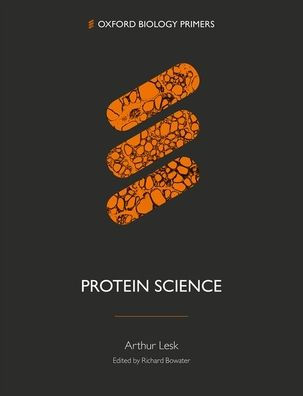Protein Science
Written primarily for students embarking on an undergraduate bioscience degree, this primer introduces students to the essential topics in protein science clearly and concisely by describing the basic chemical structure of proteins, the factors that stabilize protein structures, protein function, and protein evolution.
It begins by placing proteins in their general context in life. They are synthesized as amino-acid sequences encoded in genomes, and fold spontaneously to three-dimensional structures. This is the point where life makes the tremendous leap from the one-dimensional world of genome and amino-acid sequences, to the three-dimensional world of protein structures - indeed, the world which we inhabit.
Protein Science prepares readers for later more advanced study of the subject, but will also leave readers who do not go on to such advanced study with a satisfying grasp of the essentials of the subject.
Protein Science is supported by online resources and is available for students and institutions to purchase in a variety of formats.
The e-book offers a mobile experience and convenient access along with functionality tools, navigation features and links that offer extra learning support: www.oxfordtextbooks.co.uk/ebooks
The online resources include:
For students:
- Self-test questions
- Animations of protein structures introduced in the text
For registered adopters of the book:
· Figures from the book, available to download
1140843781
It begins by placing proteins in their general context in life. They are synthesized as amino-acid sequences encoded in genomes, and fold spontaneously to three-dimensional structures. This is the point where life makes the tremendous leap from the one-dimensional world of genome and amino-acid sequences, to the three-dimensional world of protein structures - indeed, the world which we inhabit.
Protein Science prepares readers for later more advanced study of the subject, but will also leave readers who do not go on to such advanced study with a satisfying grasp of the essentials of the subject.
Protein Science is supported by online resources and is available for students and institutions to purchase in a variety of formats.
The e-book offers a mobile experience and convenient access along with functionality tools, navigation features and links that offer extra learning support: www.oxfordtextbooks.co.uk/ebooks
The online resources include:
For students:
- Self-test questions
- Animations of protein structures introduced in the text
For registered adopters of the book:
· Figures from the book, available to download
Protein Science
Written primarily for students embarking on an undergraduate bioscience degree, this primer introduces students to the essential topics in protein science clearly and concisely by describing the basic chemical structure of proteins, the factors that stabilize protein structures, protein function, and protein evolution.
It begins by placing proteins in their general context in life. They are synthesized as amino-acid sequences encoded in genomes, and fold spontaneously to three-dimensional structures. This is the point where life makes the tremendous leap from the one-dimensional world of genome and amino-acid sequences, to the three-dimensional world of protein structures - indeed, the world which we inhabit.
Protein Science prepares readers for later more advanced study of the subject, but will also leave readers who do not go on to such advanced study with a satisfying grasp of the essentials of the subject.
Protein Science is supported by online resources and is available for students and institutions to purchase in a variety of formats.
The e-book offers a mobile experience and convenient access along with functionality tools, navigation features and links that offer extra learning support: www.oxfordtextbooks.co.uk/ebooks
The online resources include:
For students:
- Self-test questions
- Animations of protein structures introduced in the text
For registered adopters of the book:
· Figures from the book, available to download
It begins by placing proteins in their general context in life. They are synthesized as amino-acid sequences encoded in genomes, and fold spontaneously to three-dimensional structures. This is the point where life makes the tremendous leap from the one-dimensional world of genome and amino-acid sequences, to the three-dimensional world of protein structures - indeed, the world which we inhabit.
Protein Science prepares readers for later more advanced study of the subject, but will also leave readers who do not go on to such advanced study with a satisfying grasp of the essentials of the subject.
Protein Science is supported by online resources and is available for students and institutions to purchase in a variety of formats.
The e-book offers a mobile experience and convenient access along with functionality tools, navigation features and links that offer extra learning support: www.oxfordtextbooks.co.uk/ebooks
The online resources include:
For students:
- Self-test questions
- Animations of protein structures introduced in the text
For registered adopters of the book:
· Figures from the book, available to download
42.0
In Stock
5
1

Protein Science
164
Protein Science
164Paperback
$42.00
42.0
In Stock

Product Details
| ISBN-13: | 9780198846451 |
|---|---|
| Publisher: | Oxford University Press |
| Publication date: | 03/07/2022 |
| Series: | Oxford Biology Primers |
| Pages: | 164 |
| Product dimensions: | 9.81(w) x 7.55(h) x 0.30(d) |
About the Author
From the B&N Reads Blog
